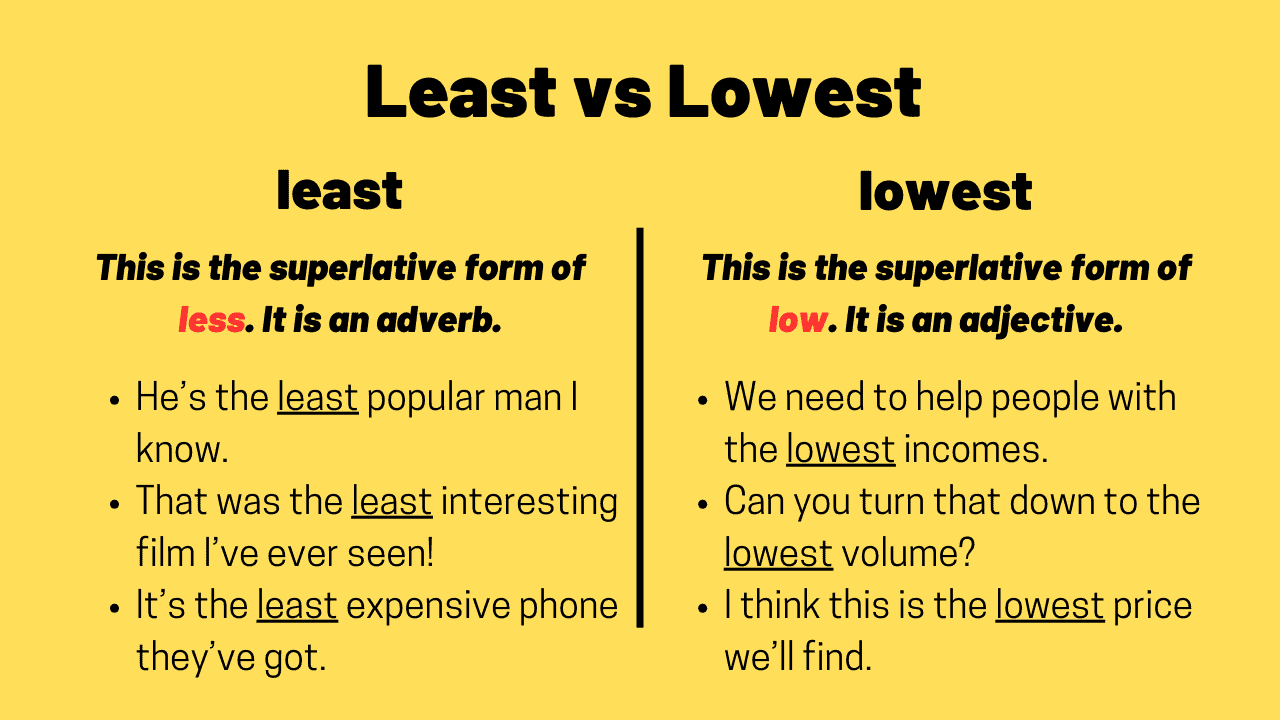When exploring the concept of “the lowest,” one inevitably delves into various contexts that bring different meanings to this comparative term. The word itself often denotes a baseline or minimal degree, whether in quality, quantity, or morality. This phenomenon is ubiquitous across numerous disciplines, including linguistics, finance, and social issues. In this article, we will elucidate the multifaceted nature of “the lowest,” ranging from its linguistic nuances to its implications in ethical discourse.
At the outset, one must consider the linguistic applications of “the lowest.” In the English language, comparative and superlative forms of adjectives allow for an expressive depiction of rank and degree. For instance, the term “lowest” serves as a superlative descriptor of “low,” embodying the extreme end of a quantitative spectrum. It presides over other comparative forms, indicating a definitive state or condition that is lower than all others. This elevation to superlative status is particularly noteworthy in the context of detailing attributes, such as “the lowest point in a landscape,” “the lowest prices in a market,” or “the lowest levels of morale in a community.” Each of these phrases suggests an inherent hierarchy, which invites a deeper analytical exploration of what constitutes “low” in various contexts.
Furthermore, in socio-economic discussions, “the lowest” is frequently employed to address poverty and inequality. Analyzing demographics, one might refer to “the lowest income households” to highlight severe financial hardship. Such a label serves to underscore the disparities that exist within a society, as well as the nuances of wealth distribution. It prompts inquiries into the systemic structures that maintain such inequalities. By identifying populations categorized as “the lowest,” stakeholders can mobilize resources, advocate for policy changes, or institute welfare programs designed to elevate these groups from their disadvantaged positions. The implications of acknowledging “the lowest” within economic discourse evoke a natural concern for ethical responsibility and social equity.
Transitioning to the realm of environmental issues, “the lowest” assumes a critical role when discussing biodiversity and conservation efforts. For example, one might encounter the phrase “the lowest populations of endangered species.” This expression highlights the urgent need for intervention to prevent extinction and restore ecological balance. The plight of various species can serve as a poignant reminder of human impacts on the environment and the critical condition of the biosphere. The phenomenon of “lowest populations” can incite activism and foster public awareness, emphasizing the fragile nature of ecosystems and the irreplaceable value of biodiversity. From this perspective, “the lowest” becomes a rallying cry for environmental advocates working to reverse the trajectories that place these species on the brink of obliteration.
Examining “the lowest” through a psychological lens reveals the complexities of human experience and emotional states. In mental health discussions, one might refer to “the lowest points of depression” as moments fraught with despair and hopelessness. Recognizing these nadirs can prompt essential conversations about mental health awareness and the importance of seeking help. Moreover, understanding the conditions leading to such lows can catalyze a discourse centered around emotional resilience, support networks, and therapeutic interventions. By addressing the “lowest” emotional states, society can promote a greater understanding of mental health, paving the way for more compassionate frameworks to support individuals in crisis.
In addition to societal implications, the concept of “the lowest” also materializes in competitive contexts, such as sports and academics. The term often appears in rankings, where denoting “the lowest score” or “the lowest achievement” serves various purposes. In a sporting context, for instance, recognizing the lowest scores can highlight areas of improvement for athletes and teams alike. Conversely, in academic realms, identifying students with the lowest grades may prompt interventions to foster better learning outcomes. The implications of these assessments extend beyond mere numbers; they can also indicate systemic issues within training, coaching, or educational methodologies that warrant examination and reform.
When delving deeper, one must also acknowledge the ethical ramifications associated with labeling something as “the lowest”. The act of categorization inherently carries sociocultural weight that can perpetuate stigma or marginalization. It is crucial that in discussions surrounding “the lowest,” sensitivity is maintained to avoid reinforcing negative stereotypes or inadvertently exacerbating the issues faced by vulnerable populations. Therefore, framing conversations around empowerment and potential rather than mere deficiency becomes an imperative aspect of responsible discourse. This approach can shift the narrative from one of deficiency to one of opportunity for growth, recovery, and rehabilitation.
In conclusion, the exploration of “the lowest” across various domains illuminates the term’s versatility and significance. Whether addressing linguistic, economic, ecological, psychological, or competitive dimensions, the implications of lowest serve as critical touchpoints in contemporary discourse. Navigating the complexities inherent in this terminology fosters a more nuanced understanding of human experience and our collective responsibility towards one another and the environment. Ultimately, recognizing the multifaceted nature of “the lowest” can enhance dialogues, catalyze action, and inspire change across myriad societal levels.






